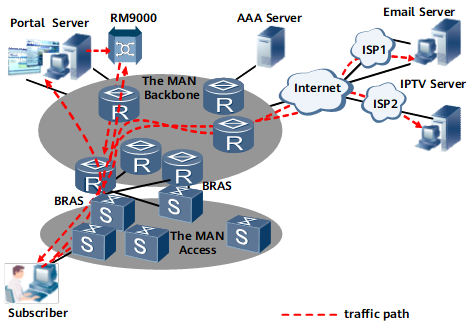Application Scenarios for BOD
Typical BOD Service Application
BOD allows the BRAS to dynamically allocate user bandwidth and modify basic user attributes, such as user groups, user priorities, and accounting policies. Users can select the desired service bandwidth types to use more service bandwidth.
As shown in Figure 1, the RM9000 functions as a policy server. The user logs in to the portal server's portal page to select a desired bandwidth type. The portal server then submits the selected bandwidth type to the RM9000. After going online, the user visits ISP1's email server and sends emails at a default bandwidth of 2 Mbit/s. To visit ISP2's video server, the user must apply for a higher service bandwidth. After the user selects a desired bandwidth type, the portal server sends the selected bandwidth type to the RM9000. The RM9000 instructs the BRAS to change the user bandwidth to 10 Mbit/s, and the BRAS sends an accounting packet to the RM9000. Then the user can access the requested video service at 10 Mbit/s.
